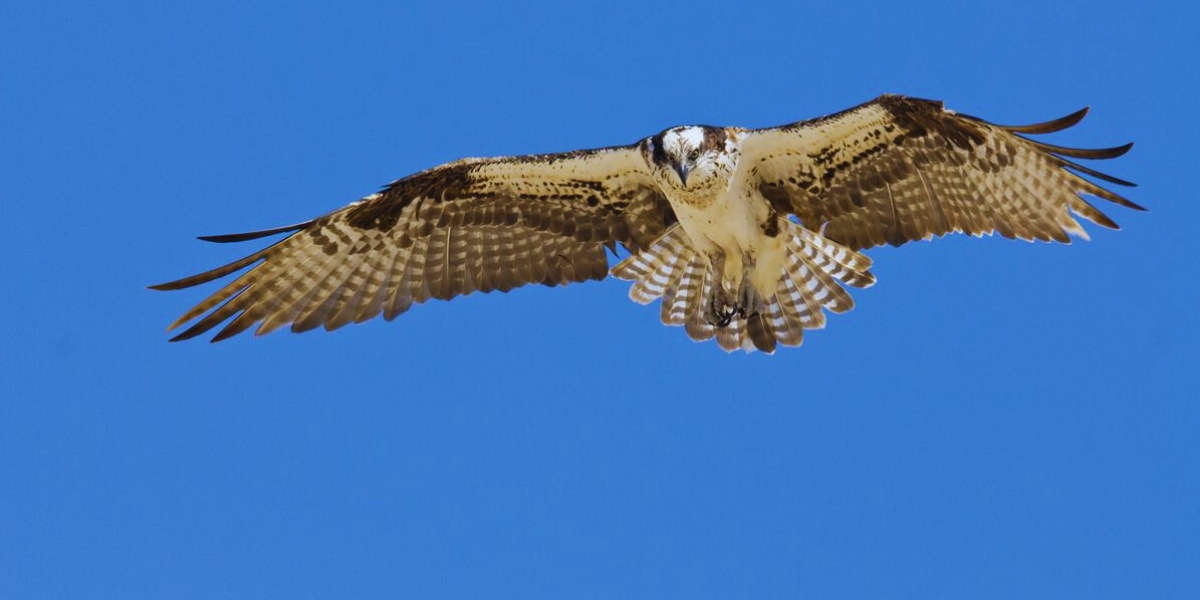Birds of prey, also called raptors, include eagles, hawks, kites, ospreys, owls, vultures and falcons. Thanks to their specialized adaptations, raptors are able to hunt, kill, and consume a wide variety of live prey. But exactly what do these avian hunters feed on in the wild? Read on to learn all about the diet and feeding habits of different birds of prey species.
Birds of Prey Hunting Adaptations
Raptors have evolved a number of anatomical and physiological traits that aid their ability to locate, pursue and capture live animal prey:
Sharp Talons and Strong Legs
Birds of prey possess large, curved talons called raptorial claws that they use to swiftly grab, kill and securely carry prey in flight. Their toes and powerful leg muscles allow them to exert high pressure with each grasping strike.
Hooked Beaks for Tearing Flesh
The strong, hooked upper beaks of raptors are effective tools for tearing flesh and ripping tough hides. They can crack through bones or shells to access nutritious organs and marrow inside.
Excellent Vision for Detecting Prey
Keen eyesight is critically important for spotting potential prey animals from high vantage points. Raptors have very sharp long-distance vision and can pick out even small rodents moving through dense grass and vegetation.
Aerodynamic Bodies and Broad Wingspans
Streamlined bodies and broad wings enable raptors to cruise effortlessly while scanning the landscape below. Their aerial agility supports high-speed dives and rapid turns when pursuing prey mid-flight.
Stealth Silent Flight Capabilities
Specialized feather adaptations allow many raptors to fly extremely quietly and stealthily. This muffles their approach, helping them get closer to prey before being detected. Owls in particular have developed silent stealth flight.
Prey Hunted and Eaten by Various Raptor Species

The specific types of prey sought out and consumed by raptors can vary considerably based on their habitat, size and individual adaptations. Here are some of the most common prey items in the diet of various birds of prey:
Owls – Rodents, Insects, Small Mammals
Most owl species are nocturnal hunters that feed heavily on small rodents like mice, voles and rats. They also prey on large insects and arachnids. Some larger owl species can kill small mammals like rabbits, hares, squirrels, raccoons and skunks.
Hawks – Small Birds, Mammals, Reptiles
Hawks are daytime raptors that primarily feed on small mammals such as voles, chipmunks, ground squirrels, rabbits, mice and shrews. They also regularly prey on other birds including pigeons, doves, quail, pheasants and songbirds. Some will eat small reptiles like snakes and lizards.
Eagles – Fish, Waterbirds, Small Animals
Bald eagles and sea eagles mainly eat fish and other aquatic animals including waterfowl. Golden and imperial eagles consume small mammals like rabbits, marmots and prairie dogs. All eagles will readily scavenge carrion and steal fresh kills from other predators given the opportunity.
Falcons – Birds, Reptiles, Large Insects
Falcons are aerial specialists that use speed and steep dives to ambush bird prey on the wing including pigeons, doves, ducks, shorebirds and songbirds. They also prey on reptiles like snakes and lizards, and some large insects such as dragonflies. The peregrine falcon is renowned for its ability to kill ducks and pigeons.
Vultures – Carrion, Garbage
Since they have weaker talons and beaks, vultures do not kill live animals. Instead they feast on carrion, feeding almost exclusively on dead animals. At landfills they scavenge trash and rotting organic waste. Turkey vultures find carcass sites by smelling emitted ethane gas.
Hunting Habits and Strategies of Birds of Prey
To successfully hunt and capture various live prey, raptors employ an array of strategies including:
Patiently Waiting in Elevated Perches
Many raptors perch and patiently watch for prey from an elevated vantage point like a tree branch, pole, or rocky outcrop. Owls in particular observe for nocturnal rodents from low night perches.
Spotting Prey From High Vantage Points
Circling and soaring high in the skies allows hawks, eagles and falcons to scan a large area for potential small animal prey that can be hard to see from the ground. The aerial view facilitates spotting and targeting.
Swift Pursuit With Bursts of Speed
Peregrine falcons and accipiters like the Cooper’s hawk rely on short bursts of extremely high speed and sudden tight turns to chase down prey while in flight. Their aerodynamic shape supports their agile acrobatic pursuits.
Agile Maneuvering During Aerial Pursuits
The superior aerial agility and precise maneuvering of falcons enables them to keep up with and seize other nimble birds like warblers in midair. Their streamlined profiles and pointed wings are perfect for agile chases.
Plunging From Sky Upon Prey Below
Many raptors will drop into a steep fast dive and plunge down upon target prey detected from their high soaring vantage point. The forceful overhead ambush helps overcome prey on the ground.
Wading in Shallow Water to Catch Prey
Wading into shallow water allows large raptors like bald eagles and ospreys to snatch fish as they swim near the surface. The water helps slow and trap their aquatic prey within leg reach.
Violent Impacts to Kill On Contact
To instantly kill prey, raptors rely on the tremendous impact forces delivered by their feet. At high speeds, their talons strike with enough force to kill prey immediately upon contact.
Repeated Crushing With Strong Feet
Raptors often subdue large struggling prey by pinning it down and repeatedly grasping with their powerful feet. The intense pressure crushes bones and eventually suffocates the prey animal.
Why Raptors Often Scavenge for Food
In addition to hunting live prey, most raptor species will readily scavenge and eat already dead animals when the opportunity arises:
Conserve Energy Compared to Hunting
Feeding on carrion provides raptors with an essential source of nutrition without expending energy locating and killing fresh prey. Scavenging helps sustain them through periods when hunting may be scarce.
Take Advantage of Freely Available Meat
Vultures and other raptors use their sharp vision to spot animal carcasses from great distances in the air. Scavenging allows them to opportunistically take advantage of the freely available meat.
Allows Larger Sustainable Populations
The abundant year-round food source provided by animal carcasses and carrion supports larger sustainable populations of certain raptors including vultures and condors than hunting live prey alone could provide.
Provides Food When Hunting is Unsuccessful
Scavenging gives raptors a reliable supplemental food source on days when their efforts to find and capture live prey are unsuccessful. It provides a vital backup meal.
Supplements Diet Between Hunts
Scavenging also helps supplement the diet of actively hunting raptors like eagles and hawks between successful kills. The added calories from carrion provide fuel and nutrients to sustain them.
Captive Raptor Diet and Feeding Tips
For raptors kept in captivity such as birds undergoing rehabilitation, providing a suitable diet is essential to maintaining their health:
Whole Prey Items Like Mice and Chicks
The ideal nutritional diet for captive raptors closely mimics their wild food sources. Daily offerings of whole mice, rats, chicks, quail, rabbits or fish provide complete nutrition.
Muscle Meat and Organ Pieces
To supplement whole prey, chopped muscle meat, heart, liver and other raw organ pieces can be fed. Cooked poultry, beef, pork, lamb and fish can also be eaten but raw is ideal.
Commercial Bird of Prey Diets
There are special frozen raw diets formulated by nutritionists to provide the balanced macros and micros raptors require. These convenient complete diets simplify feeding.
Plucking Feathers Before Serving
The feathers and fur of prey items should be plucked or singed off before feeding to prevent raptors from ingesting indigestible hair and feathers.
Skewering or Suspending Prey
Impaling prey on a natural tree branch perch or suspending it from ropes, strings or bungee cords promotes more natural feeding behaviors and activity.
Vegetables for Fiber
While not a primary food item, limited amounts of vegetables, greens, sprouts and fruits help support digestive tract health and provide trace nutrients.
Calcium for Egg Laying
Cuttlebones, ground eggshells, and calcium supplements are important for ensuring breeding raptors get adequate calcium for egg development and laying.
Avoid Spoiled or Tainted Foods
Always use fresh human-grade foods and thoroughly check them for spoilage or signs of disease to reduce the risk of harmful bacterial and fungal toxins.
Peopl Also Read:
- What Kind of Birds Eat Peanuts: A Guide for Birdwatchers
- What Do Myna Birds Eat? Exploring Their Food Choices
Conclusion
Equipped with their arsenal of sharp talons, hooked beaks, excellent vision and silent stealth flight capabilities, birds of prey are consummate hunters designed by evolution to skillfully locate and kill all manner of small animals. The diet of raptors in the wild varies based on habitat and consists mainly of small mammals, birds, fish and reptiles. They also regularly supplement by scavenging carrion. Careful feeding of whole prey items provides the nutrition captive raptors need to thrive.
Understanding what birds of prey like owls, hawks, eagles and falcons, feed on provides fascinating insight into their biology and ecology as top predators. Their mastery of hunting allows raptors to help control pest, rodent, and rabbit populations, identify diseased animals, and clear up carrion. These incredible avian hunters are truly built to kill!

